Biological Molecules
1/24
There's no tags or description
Looks like no tags are added yet.
Name | Mastery | Learn | Test | Matching | Spaced |
|---|
No study sessions yet.
25 Terms
What are monomers and polymers?
● Monomers - smaller, repeating molecules / units from which larger molecules / polymers are made
● Polymers - molecules made from many (a large number of) identical / similar monomer molecules
What happens in condensation reactions
● 2 molecules join together
● Forming a chemical bond
● Releasing a water molecule
What happens in hydrolysis reactions
● 2 molecules separated
● Breaking a chemical bond
● Using a water molecule
Give examples of polymers and the monomers from which they’re made
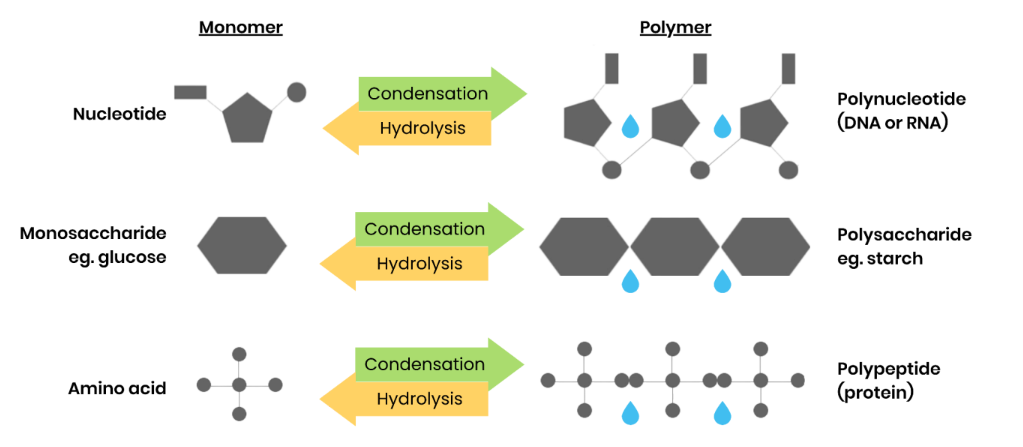
What are monosaccharides? Give 3 common examples
● Monomers from which larger carbohydrates are made
● Glucose, fructose, galactose
Describe the structure of α-glucose
● Left - full structure, carbon atoms labelled
● Right - simplified structure as in the specification to be memorised for exam
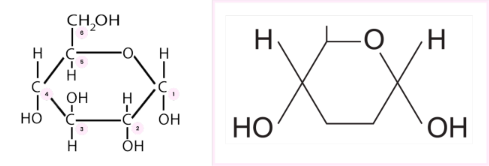
Describe the difference between the structure of α-glucose and β-glucose
● Isomers - same molecular formula but differently arranged atoms
● OH group is below carbon 1 in α-glucose but above carbon 1 in β-glucose
What are disaccharides and how are they formed?
● Two monosaccharides joined together with a glycosidic bond
● Formed by a condensation reaction, releasing a water molecule
List 3 common disaccharides & monosaccharides from which they’re made
Maltose = Glucose + glucose
Sucrose = Glucose + fructose
Lactose = Glucose + galactose
Draw a diagram to show how two monosaccharides are joined together

What are polysaccharides and how are they formed?
● Many monosaccharides joined together with glycosidic bonds
● Formed by many condensation reactions, releasing many water molecules
Describe the basic function and structure of starch
Energy store in plant cells
● Polysaccharide of α-glucose
● Some has 1,4-glycosidic bonds so is unbranched (amylose)
● Some has 1,4- and 1,6-glycosidic bonds so is branched (amylopectin)
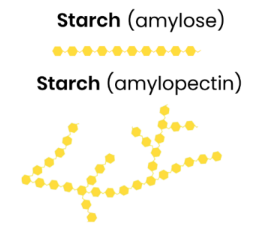
Describe the basic function and structure of glycogen
Energy store in animal cells
● Polysaccharide made of α-glucose
● 1,4- and 1,6-glycosidic bonds → branched
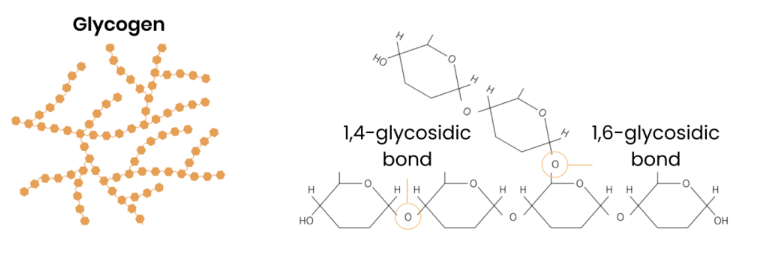
Name two groups of lipid
Triglycerides and phospholipids.
Describe / draw the general structure of an amino acid
● COOH = carboxyl group
● R = variable side chain / group
● H2N = amine group
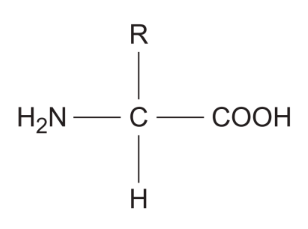
How many amino acids are common in all organisms? How do they vary?
The 20 amino acids that are common in all organisms differ only in their side group (R).
Describe how amino acids join together
● Condensation reaction
● Removing a water molecule
● Between carboxyl / COOH group of one and amine / NH2 group of another #
● Forming a peptide bond
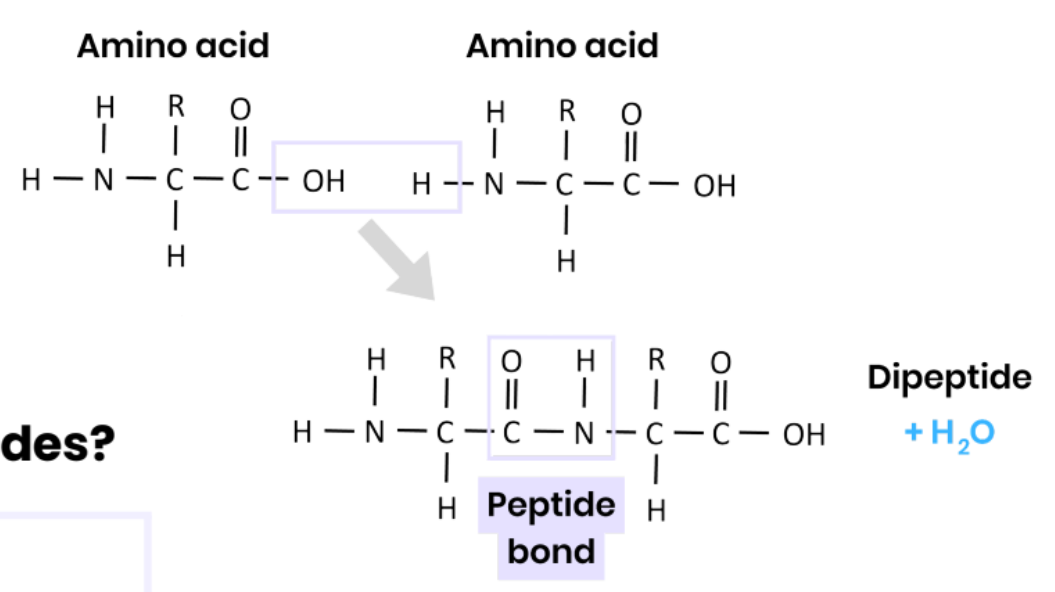
What are dipeptides and polypeptides?
● Dipeptide - 2 amino acids joined together
● Polypeptide - many amino acids joined together
A functional protein may contain one or more polypeptides.
Describe the primary structure of a protein
Sequence of amino acids in a polypeptide chain, joined by peptide bonds
Describe the secondary structure of a protein
● Folding (repeating patterns) of polypeptide chain eg. alpha helix / beta pleated sheets
● Due to hydrogen bonding between amino acids
● Between NH (group of one amino acid) and C=O (group)
Describe the tertiary structure of a protein
● 3D folding of polypeptide chain
● Due to interactions between amino acid R groups (dependent on sequence of amino acids)
● Forming hydrogen bonds, ionic bonds and disulfide bridges
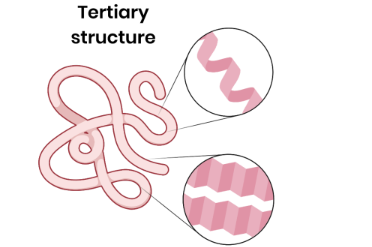
Describe the quaternary structure of a protein
● More than one polypeptide chain
● Formed by interactions between polypeptides (hydrogen bonds, ionic bonds, disulfide bridges)
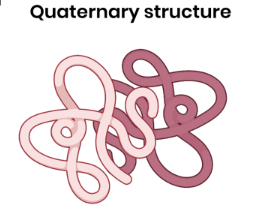
Describe the test for proteins
1. Add biuret reagent (sodium hydroxide + copper (II) sulphate)
2. Positive result = purple / lilac colour (indicating presence of peptide bonds)